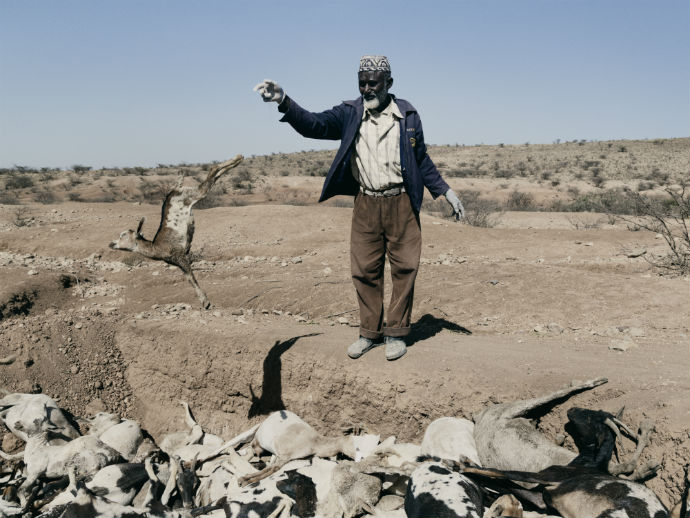Recurrent droughts cost Somalia up to $3b in losses and damages-report

Losses refer to changes in economic flows arising from a disaster and occur until full economic recovery and reconstruction is realized and may last for several years

Somalia will need close to $2b dollars in three to five years’ time to recover from recurrent droughts which have plunged the country into losses and damages of upwards of $3b and build resilience to future droughts, a government-led study has revealed.
The Drought Impact Needs Assessment (DINA) conducted by the Federal Government with the support of the World Bank, the UN and the EU also estimates recurrent droughts in Somalia have occasioned the country damages amounting to $1.02 billion and a further $2.23 billion on losses.
To reverse these trends and avert future droughts, the report notes, an investment of $1.77 billion must be injected into the economy between now and 2022. The study launched in October brought together international technical experts with the mandate of identify the drivers and impact of recurrent drought, and outlining long-term solutions that can prevent famine as a result of drought.
Damages refer to the total or partial destruction of physical assets in an affected areas and occur during and immediately after a disaster. The monetary value of damages is expressed as the replacement costs, according to prices prevailing just before the disaster.
Losses on the other hand refer to changes in economic flows arising from a disaster and occur until full economic recovery and reconstruction is realized and may last for several years. This may include decline in productive sectors such as agriculture, livestock of fisheries. However the drafters of the DINA report which to be officially launched early next year projects losses up to January 2018.
The Federal Government presented the findings during the Somalia Partnership Forum in Mogadishu on 5th December.
LONG TERM INTERVENTIONS
The DINA findings will inform the development of a Recovery and Resilience Framework (RRF)) that will recommend long-term recovery and resilience interventions, to be delivered in complementarity with lifesaving humanitarian response and in line with the priorities of the National Development Plan.
Planning minister Gamal Hassan hailed the report as instrumental in developing long term solutions to averting future droughts and famines.
“With this initiative, we aim to tackle the devastating and unsustainable cycle of recurrent drought and famine risk. These findings lay the foundations for the pathway to resilience and sustainable development in Somalia,” he said.
World Bank country representative Hugh Riddell told Goobjoog News in an interview last week the DINA report presents an opportunity for Somalia to build its resilience to avert future disasters and depend on itself rather than seeking international support.
“This year Somalia mobilized over a billion dollars to support humanitarian recovery, that’s a very generous contribution by the International community but it’s not guaranteed so next time, the Somalia Government needs to be responding,” said Riddel.